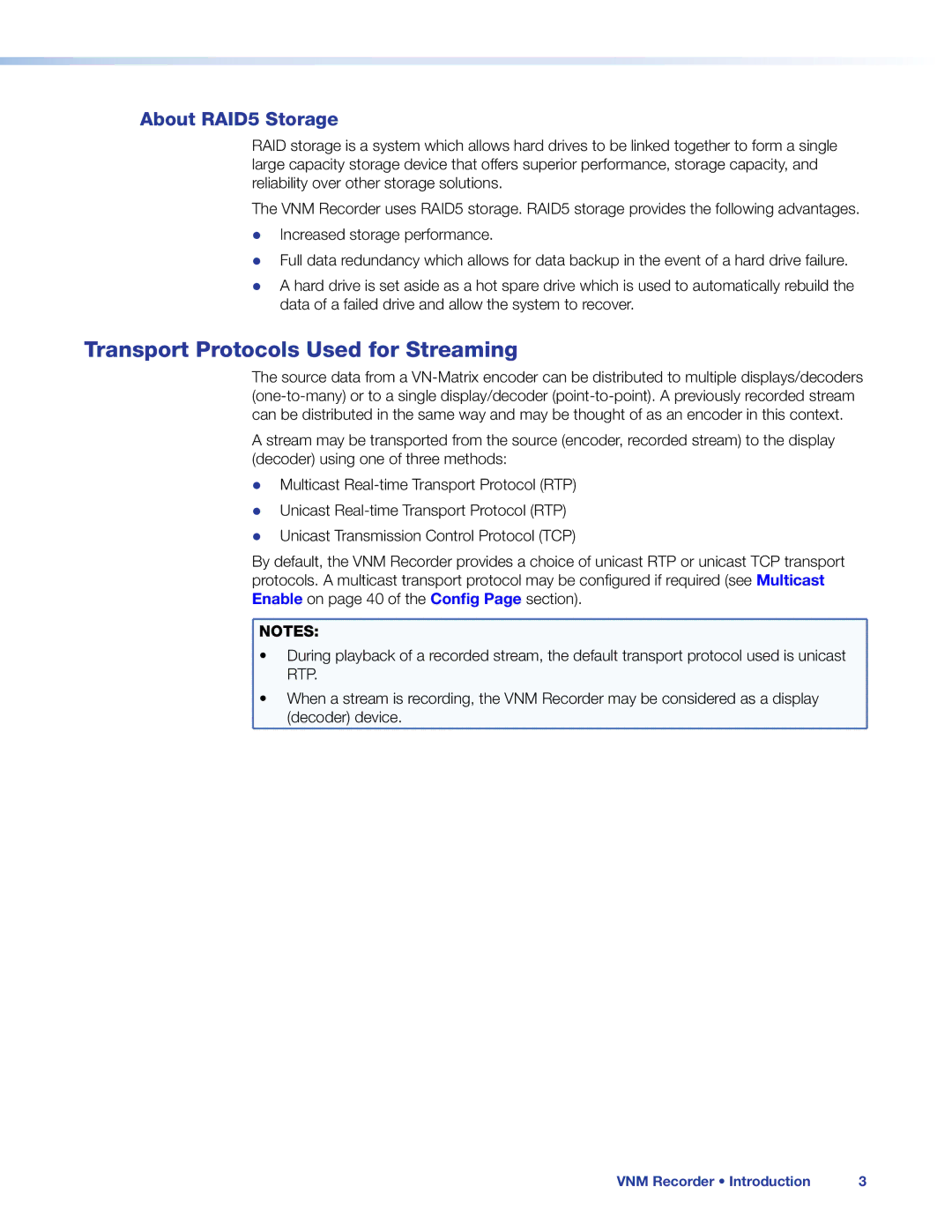
About RAID5 Storage
RAID storage is a system which allows hard drives to be linked together to form a single large capacity storage device that offers superior performance, storage capacity, and reliability over other storage solutions.
The VNM Recorder uses RAID5 storage. RAID5 storage provides the following advantages. zz Increased storage performance.
zz Full data redundancy which allows for data backup in the event of a hard drive failure.
zz A hard drive is set aside as a hot spare drive which is used to automatically rebuild the data of a failed drive and allow the system to recover.
Transport Protocols Used for Streaming
The source data from a
A stream may be transported from the source (encoder, recorded stream) to the display (decoder) using one of three methods:
zz Multicast
zz Unicast
zz Unicast Transmission Control Protocol (TCP)
By default, the VNM Recorder provides a choice of unicast RTP or unicast TCP transport protocols. A multicast transport protocol may be configured if required (see Multicast Enable on page 40 of the Config Page section).
NOTES: | |
• | During playback of a recorded stream, the default transport protocol used is unicast |
| RTP. |
• | When a stream is recording, the VNM Recorder may be considered as a display |
| (decoder) device. |
VNM Recorder • Introduction | 3 |
